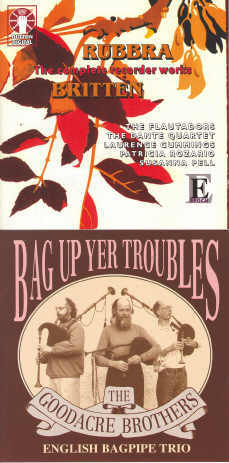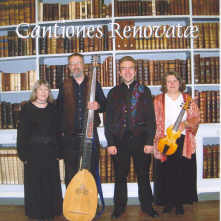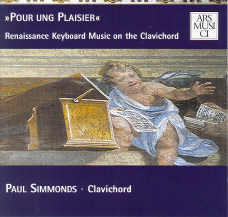|
CDs at Greenwich Early Music Festival
The Flautadors etc Rubbra & Britten Complete Music for Recorders
Julian Goodacres English bagpipe music
Cantiones Renovatae Music of Philip van Wilder
Paul Simmonds (clavichord) Renaissance keyboard music
Varied fare received for review was a welcome spin-off from last weekend's Early Music Festival, these CDs epitomising the vitality and variety of early music in Britain. All are recommendable, in quite different ways.
 The Britten/Rubbra collection [Dutton CDLX 7142] brings together music most of which is only known to recorder players. The four Flautadors take turns with different sized recorders. Rubbra was a devotee of the instrument over many years, writing mainly for the Dolmetchs. His Meditazioni Op 67 is quite popular and very beautiful. It, and its larger sequel, Passacaglia Op 115, go better with harpsichord than with optional piano. The Sonatina Op 128 is a substantial work of 11 mins and should drop its "-ina" from the title. It is especially successful here (Ian Wilson and Laurence Cummings). There are effective easy pieces by both composers, Rubbra's Study Pieces (an off-putting title for some delightful music?) and Britten's Alpine Suite for recorder trio (composed in the Alps to console a friend with an injured ankle) showing his unerring skill, able to turn his invention to anything as occasion suggested. The Britten/Rubbra collection [Dutton CDLX 7142] brings together music most of which is only known to recorder players. The four Flautadors take turns with different sized recorders. Rubbra was a devotee of the instrument over many years, writing mainly for the Dolmetchs. His Meditazioni Op 67 is quite popular and very beautiful. It, and its larger sequel, Passacaglia Op 115, go better with harpsichord than with optional piano. The Sonatina Op 128 is a substantial work of 11 mins and should drop its "-ina" from the title. It is especially successful here (Ian Wilson and Laurence Cummings). There are effective easy pieces by both composers, Rubbra's Study Pieces (an off-putting title for some delightful music?) and Britten's Alpine Suite for recorder trio (composed in the Alps to console a friend with an injured ankle) showing his unerring skill, able to turn his invention to anything as occasion suggested.
Rubbra's Fantasia for chamber ensemble (with the Dante Quartet) is a nice pendant to the Dutton series of Rubbra's chamber music, and his Cantata Pastorale a moving setting of words by Plato and St Augustine - the beauties of Spring leaving him desolate and 'alone with pain' (Patricia Rosario).
Julian Goodacres is the doyen of the English bagpipe world, maker and expert performer. His collection of 24 English dance tunes played with friends on 16 different instruments in a host of combinations will surprise you and sharpen your listening ears. Very enjoyable, but take care; it might tempt you to take up this indoor instrument which is relatively quiet and home-friendly. Lots of information on Julian's wesite. 
Cantiones Renovatae (Richard Lindsay, counter-tenor; Stewart McCoy, lute, Kathleen Berg, organ) have a CD exploring Henry VIII's master-musician Philip van Wilder which I have enjoyed (Meden Recordings).
Paul Simmonds in his newest CD [Ars Musici AM 1378-2] explores music which drew upon and transformed music composed for organ, harpsichord, voice and other instruments. Portability and relative cheapness made clavichords welcome in the private home and wherever music was taught.
He draws upon the Buxheim Organ Book and another German source compiled by Kleber in Pforzheim. Sweelinck's Fantasia chromatica (c.1620) is that composer's most complex. There are less sophisticated song-dances from Venice, and the whole programme goes well on Karin Richter's copy of the earliest surviving signed and dated clavichord (Pisaurensis, Venice 1543).
It sounded rather austere to my ears at first, but warmer via my DVD and TV set to pseudo-surround. One needs to be very circumspect evaluating recording quality, as CDs can sound so very different on different equipment, with a considerable capacity for listener-control. If you are unfamiliar with the special beauties of the clavichord, I would recommend first Simmonds' CD of my late-18th C namesake, E. W. Wolf [AM 1206-2]
|



